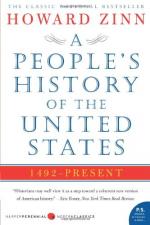
|
| Name: _________________________ | Period: ___________________ |
This test consists of 5 multiple choice questions, 5 short answer questions, and 10 short essay questions.
Multiple Choice Questions
1. According to the author in Chapter 4, in 1700 colonial trade equaled £500,000; by 1770 it totaled how much?
(a) £800,000
(b) £1,500,000
(c) £1,000,000
(d) £2,800,000
2. When did Christopher Columbus first encounter the Arawak people?
(a) 1499
(b) 1492
(c) 1479
(d) 1502
3. The author states in Chapter 2 that the history of slavery in the United States traces back to where?
(a) Virginia
(b) Mississippi
(c) Kentucky
(d) Louisiana
4. The Indian Removal Act was signed into law by what U.S. President?
(a) Martin Van Buren
(b) Abraham Lincoln
(c) James Polk
(d) Andrew Jackson
5. When was the United States Bill of Rights ratified?
(a) September 18, 1634
(b) February 10, 1763
(c) December 15, 1791
(d) February 2, 1626
Short Answer Questions
1. When did Great Britain impose the Stamp Act, requiring that many printed materials in the colonies be produced on stamped paper made in London?
2. What was the name of the agreement struck in 1895 between African-American leaders and Southern white leaders that stipulated Southern blacks would work meekly and submit to white political rule, while Southern whites guaranteed that blacks would receive basic education and due process in law?
3. In Chapter 9, the author asserts that in 1790, there were 500,000 slaves in the U.S. How many slaves were there in 1860?
4. Where did the first victory of the American Revolution take place?
5. The Indian Removal Act was signed into law in what year?
Short Essay Questions
1. Where did Christopher Columbus intend to travel when he “discovered” the Americas? Where does the author assert he actually landed in Chapter 1?
2. How does the author describe Virginia’s “chain of oppression” in Chapter 3?
3. How does Howard Zinn describe the changes of the Native American population from the 1820s to the 1840s in Chapter 7?
4. How does the author describe the beginning of the American Revolutionary War in Chapter 5? How successful were the Americans in the first battles?
5. How does the author describe Mexico’s land area and status after 1821 in Chapter 8?
6. How do we know the details of Christopher Columbus’s first encounter with the Arawak people? How does the author describe Columbus’s views of the people in Chapter 1?
7. How is the Flour Riot of 1837 described in Chapter 10? What was the cause of the riot?
8. Why did the English send 1,000 soldiers to Virginia in 1676, according to the author in Chapter 3?
9. How does the author describe the Sioux puberty ceremony for women in Chapter 6?
10. How does the author compare and contrast the treatment of women to that of the Native Americans in Chapter 7?
|
This section contains 832 words (approx. 3 pages at 300 words per page) |

|




